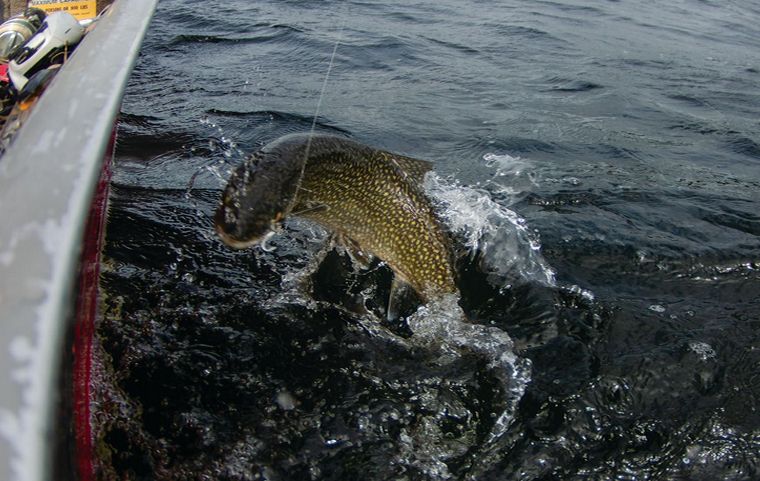
A fishing guide’s advice for correcting the most common errors so you can start fishing better right away.
Screw-ups, gaffes, goof-ups — call them what you will, they can creep in and affect every aspect of our time on the water. And like fish, humans are creatures of habit. We tend to do the same things wrong time and time again, without even thinking about what we’re doing or why. Working as a full-time fishing guide, I spend just about every open-water day in a boat with anglers, and I’ve seen a lot of mistakes repeatedly made by anglers pursuing this great pastime.
Whether I’m fishing with die-hard muskie enthusiasts or young children and their parents, I see the same technical errors over and over. These are tiny, easy-to-fix details that make gigantic differences in the number of fish anglers ultimately hook, fight, and land. Yet fishing, as a mechanical skill, is about as straightforward and easy to master as it gets, especially compared to other outdoor activities like golf, tennis, or even hunting. And mastering the mechanical fundamentals is one of the best ways I know to flat-out land more fish.
Speaking of fundamentals, a huge part of any guide’s job is being a great instructor. If our guests don’t look good, we don’t look good, so don’t make the mistake of ignoring your guide’s expertise. Take as much away from your time with them as you can.
Let’s turn an eye towards other common and costly errors folks make, and some strategies to break those bad habits for good.
1. Not feeling it
Not knowing when you have a fish on is a mistake. Being able to tell the difference between when a fish is putting your lure in its mouth and when you’re simply touching bottom is a critical skill that takes time to master. Fish aren’t always going make it easy by outright smashing the bait.
Bright and braided
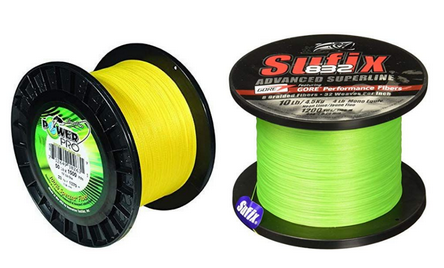
Braided non-stretch lines offer superior sensitivity. Always maintain some form of tension or back pressure on your line and avoid losing total contact with your presentation. Whenever slack is created, become a compulsive line-watcher. Watch the entire length of line from your rod tip to where it touches the water. Be alert to any interruptions, sudden changes in direction, tightness, or weight. High-visibility lines are a godsend here.
Feel the vibe
Not paying attention to a lure’s free-swimming feel is another mistake. Crankbaits, spinners, spoons, and swimbaits are deadly lures. Simply cast them out and reel them straight in, paying close attention to their built-in movement that’s easy to feel through the rod and to detect when that movement changes. When jigging, contact with bottom or cover is a dead, lifeless feeling. Even fish that bite softly still have that “live” feel to them, be it a tick, tap, or plucking sensation. Set the hook on those!
Bangin’ with heavies
As for lure selection, especially with jigs, drop-shot or slip sinkers, or other presentations that rest on bottom, opt for heavier weights. Not only will these get and stay in the strike zone easier, they’re also more sensitive. Picture a phone book lifted off your lap; it would be easy to detect, whereas a page lifted would be difficult to notice. The same goes for detecting strikes on lures: it will be easier to feel bites on a 1⁄2-oz jig than a 3⁄8-oz jig. As long as the fish will bite, I’ll always go heavier.
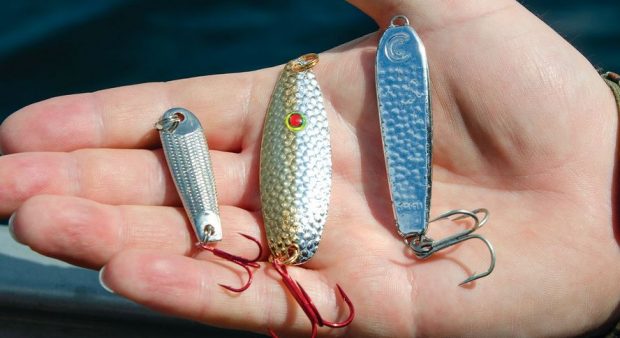
2. Insecure hookset
The single biggest factor in not landing fish is a failure to drive the hook(s) firmly into the fish’s mouth. I see more fish lost on this one mistake than all others combined. Set the hook hard and you’ll only need to do it once.
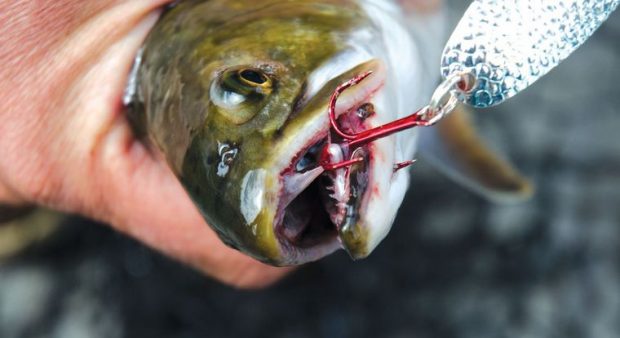
Light sweeping
A sweep set is ideal for lighter lines and rods, such as when drop-shotting or live-bait rigging. Simply lift the rod firmly straight up and reel at the same time. Continuous tension is maintained, lighter lines are cushioned against breakage, and the smaller, thinner hooks usually used here dig in and stay put with minimal effort.
Light sweeping
A sweep set is ideal for lighter lines and rods, such as when drop-shotting or live-bait rigging. Simply lift the rod firmly straight up and reel at the same time. Continuous tension is maintained, lighter lines are cushioned against breakage, and the smaller, thinner hooks usually used here dig in and stay put with minimal effort.
Crush ’em & crank
This is highly effective when using larger, heavier, and quicker-moving lures, like spinnerbaits or lipless crankbaits. The rod can be swung much more aggressively, either straight up or to one side. Keeping the reel handle moving is key for controlling the fish’s path of travel and keeping the line tight. Baits like these don’t take much slack to shake free. The kiss of death after any hook-set is what I call “sitting back and admiring your work.” A satisfactory hook-set is easily wasted by not using the reel to immediately take in line. Rod and reel must work in tandem at all times.
3. Fumbling the fight
Feeling the bite and driving in hooks are only 2/3 of the fish-catching equation. The final step is controlling the fish and getting it into a position where it can finally be landed. There are key stages during every fish fight when the tables can quickly turn on an angler.
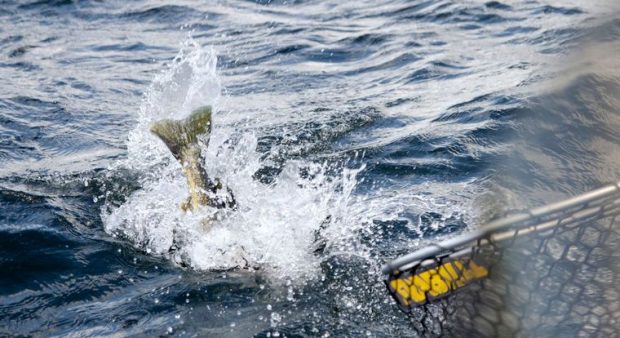
High rod vs low rod
Excellent tension can be maintained on fighting fish using longer rods and keeping the rod tip in a high position. Depending on the species you’re after, give a good look at longer rods, which most manufacturers offer. A notable exception to fighting fish with the rod high is when fish prepare to jump, and this includes bass, trout, pike, or muskie. Switching to a super-low angle and reeling aggressively helps keep fish under the surface and greatly improves your chances of landing them. A longer rod can actually be dunked right down into the water, further helping the cause.
Easy does it at the boat
In my experience, the overwhelming majority of fish are lost the last few feet from the boat. That’s because the less line you have between the rod tip and the fish, the more can go wrong. Tension can reach a critical point on a short line, causing failures to lines, knots, rods, terminal rigging, and even the tissues inside the fish’s mouth. I always ensure anglers leave at least one rod length of line out to finish the fight, and that they stop reeling and control the fish using only the rod.
The clicky sound means stop reeling!
Reeling in while the drag is peeling out is a classic fish-fighting error. Use the rod to maintain tension, and try the “pumping” method, instead. Lift with the rod, then reel while you bring it back down. Stop reeling while you lift the rod upwards to the starting point. Repeat this procedure over and over again until the fish is in net range. Not only will reeling against the drag do nothing to gain line on your fish, it will also create a huge amount of line twist, especially with monofilament and fluorocarbon lines.
A tale of a fail
Maintaining composure, anticipating the next move, and taking the right response make all the difference in the landing. Not having these skills can cause lost fish that you’ll never forget. Here’s one example.
A guest was fishing with me on the French River a few years ago. A hot, windy, and dark afternoon gave way to a gorgeous evening. The very first shoal we pulled up on had a good muskie history with me, and we hadn’t made it through our first lap when a really big fish slurped my guest’s surface bait three feet into his retrieve.
He responded with a passable hook-set, but immediately after, the rod slumped from fully loaded to barely bent. He stopped reeling when the fish began to thrash just under the surface. Barely any tension was maintained on the line; the fish was free to move anywhere it liked. I could see the lure completely inside the muskie’s mouth, a great sign that gave me hope that he could bounce back and land this muskie.
The fish neared the boat and showed signs of preparing for a big jump, as the line sliced straight up for the surface. I croaked out, “Bury her head and crank,” hoping he would move the rod tip low and reel hard, keeping the muskie’s mouth submerged, making it a lot harder to throw the hooks. No such luck. The rod flattened, the 54-inch class fish was airborne, and the surface bait flew straight back at us. Fish gone. Giant gone. Muskie photo of a lifetime gone.
A lifetime worth of fish-fighting lessons were learned that evening. That angler still fishes with me and he’s gone on to land many good muskies, with greatly improved mechanics. A guest’s joy is my joy, just as their losses are also mine.
Why you should learn to troll
It’s the fastest way to find the liveliest depths on any waterbody
Map potential areas fast. You can always return to jig, cast, or drift
You can team up and use multiple lines to test a variety of depths
It’s often the best option in windy weather
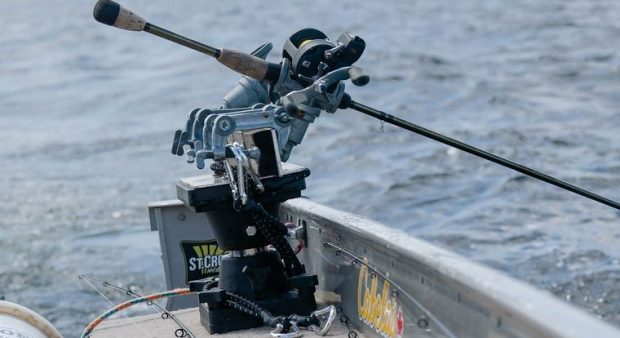
Baitcasters: making it easy
Many anglers are intimidated by baitcaster reels. Folks love them or hate them, or are just plain terrified to try them. I teach dozens of anglers to use them each season using an incredibly simple trick: heavy, highly aerodynamic lures. Wind becomes almost a non-factor with the right lure, and backlashes — what happens when your lure slows but your spool does not — are greatly minimized.
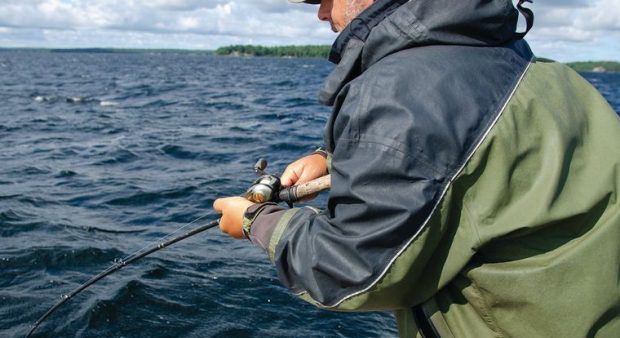
Heavy lures require very little in the way of a windup, backswing, or follow-through to launch. A simple sidearm or underhand lob will get them sailing. Anglers new to muskie casting are the easiest to teach, because they’re using lure weights that basically cast themselves, and don’t slow down much during flight. A spool that keeps spinning too freely risks overrunning badly. You want a lure that really cuts the air and keeps that spool spinning at a steady, consistent rate until it touches down.
I call the final phase, when the lure lands on the water, “the clamp.” Use your thumb to immediately stop the spool from rotating. An educated thumb will always be your best insurance against backlashes.
Lures to practice baitcasting with
Pike: 1-oz spoons
Bass: Lipless rattlebaits
Salmon and trout: Compact pier-style ¾- to 1-oz spoons
Muskie: Walk the dog or prop-style surface plugs
Walleye: ½-oz jig and swimbait combo or bucktail jig
Don’t lose your temperature
Pay close attention to the ways fish respond to changes in season. What types of food do they typically eat, and how does water temperature affect that relationship? Knowing where muskie gorge on 4-5 inch perch in late June won’t help you find those same fish when they’re eating 15-inch herring in early December. Much of the predator-prey-angler dynamic through the year is driven by temperature. Pay close attention to how it governs what foods are most readily available, and you’ll often be able to find your target species easier. Insect hatches, crayfish moulting, and baitfish spawns and migrations are all influenced by water temperatures and so are the movements of the gamefish that depend on them. Remember also that your calendar is a best-guess guideline. These relationships unfold on their own timelines from season to season, based on weather.

JP Bushey is a year-round fishing guide, chasing all species of fish. Based out of Barrie, he plies the waters of Georgian Bay, Lake Simcoe, the Bay of Quinte, Kawartha Lakes, and northern Ontario. He’s a writer, lure maker, and seminar speaker.
Originally published in Ontario OUT of DOORS’ 2020 Fishing Annual.


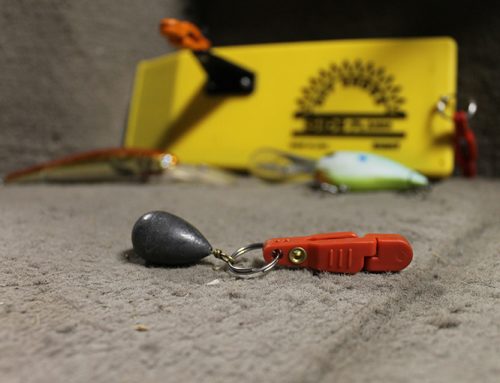
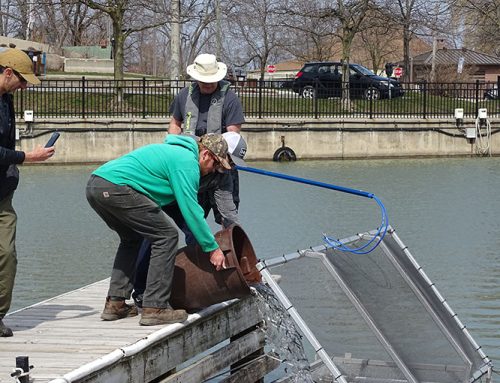
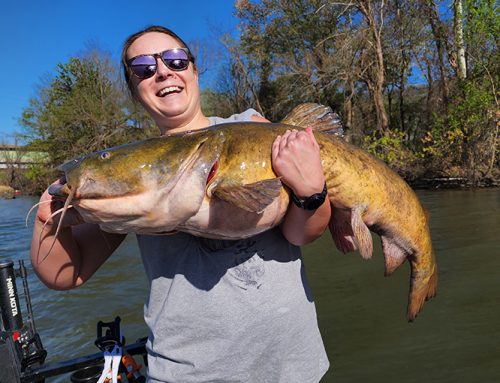
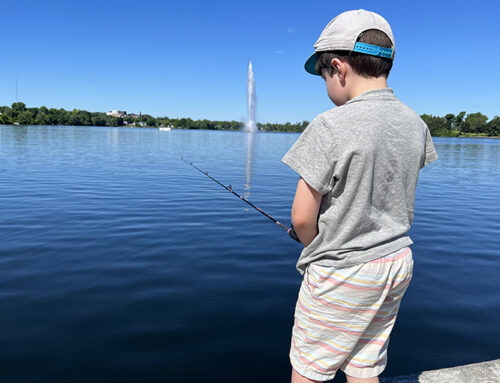
Great article, JP!
I have been searching for the perfect musky rod holder for my boat and the 5th picture in this article is the answer to my prayers!! Would it be possible for you to share the design for the mount you have pictured please? It looks to me like a custom-built plate that attaches to the top of a Scotty extender base? Or maybe it’s a product I just haven’t encoubtered yet.
Any information you can share would be much appreciated.
Best of luck for this upcoming year for guiding,
Charlie